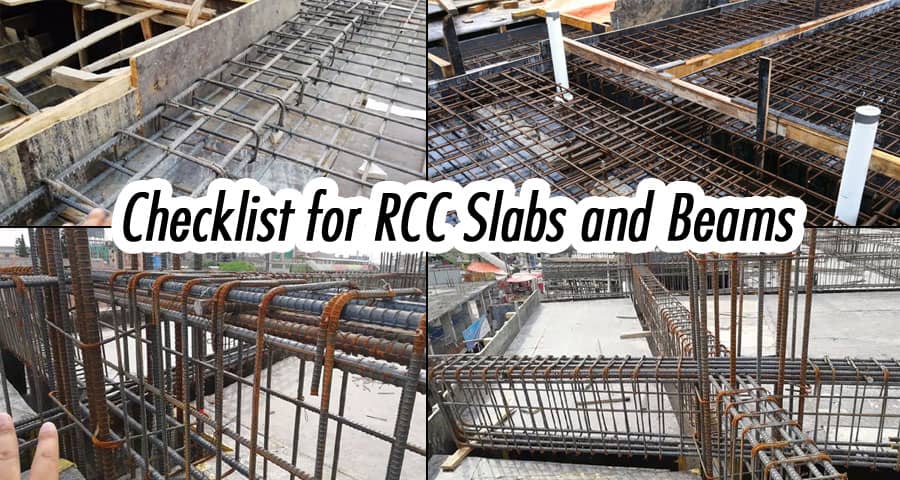Some Vital Checklist for RCC Slabs and Beams

In the realm of construction, Reinforced Cement Concrete (RCC) slabs and beams are integral components that provide structural strength and stability to buildings. Whether you are a seasoned contractor or a homeowner embarking on a construction project, it's crucial to ensure that your RCC slabs and beams meet the highest standards of quality and safety.
Introduction
RCC slabs and beams form the backbone of any construction project. Ensuring their structural integrity is vital to guarantee the safety and longevity of your building. Let's delve into the essential checklist items to keep in mind when dealing with these crucial components.
Understanding RCC Slabs and Beams
What Are RCC Slabs?
Reinforced Cement Concrete (RCC) slabs are horizontal structural members that provide support for the floors of a building. They distribute loads evenly and ensure the stability of the structure.
What Are RCC Beams?
RCC beams, on the other hand, are vertical or horizontal members that support the slabs and transfer the load to the columns or walls. They play a critical role in bearing and distributing the weight.
Design and Planning
- Load-Bearing Analysis: Before constructing RCC slabs and beams, conduct a thorough load-bearing analysis to determine the amount of weight they must support. This analysis ensures that the design is adequate for the intended purpose.
- Material Selection: Choose high-quality cement, aggregates, and steel reinforcement. The strength of these materials is paramount to the durability of your RCC elements.
Quality Control During Construction
- Proper Reinforcement: Ensure that the steel reinforcement bars (rebar) are placed correctly, as per the structural design. Inadequate or incorrect placement can weaken the structure.
- Adequate Curing: Properly cure the concrete to prevent cracks and ensure its strength. Adequate curing involves maintaining the right moisture and temperature conditions for a specified period.
- Correct Formwork: Use high-quality formwork to shape your slabs and beams accurately. Any imperfections in formwork can lead to structural issues.
Testing and Inspection
- Non-Destructive Testing: Consider non-destructive testing methods like ultrasonic testing and rebound hammer testing to assess the quality and integrity of your RCC elements without causing damage.
- Load Testing: Conduct load testing to verify that your slabs and beams can withstand the expected loads. This step is crucial for ensuring safety.
Maintenance and Longevity
- Preventive Measures: Implement preventive measures such as waterproofing and corrosion protection to enhance the lifespan of your RCC slabs and beams.
- Periodic Inspections: Regularly inspect your structures for signs of wear and tear. Early detection of issues can prevent major problems down the line.
Common Issues and Troubleshooting
- Cracks in Slabs and Beams: Address cracks promptly by repairing them with appropriate materials and techniques to prevent further damage.
- Rust in Reinforcement: Rust in reinforcement can weaken the structure. Implement anti-corrosion measures and replace corroded steel if necessary.
Conclusion
In conclusion, RCC slabs and beams are fundamental to the structural integrity of any building. By adhering to this checklist and maintaining a commitment to quality and safety, you can ensure the longevity and reliability of these critical elements in your construction projects.
FAQs
How do I choose the right mix for my RCC slabs and beams?
The mix design should be based on the load analysis and the quality of materials available. Consult with a structural engineer for guidance.
Are cracks in RCC slabs and beams a common issue?
Yes, cracks can occur due to various factors. Proper design, construction, and maintenance can minimize this problem.
Is it necessary to conduct load testing on RCC beams?
Yes, load testing is essential to ensure that the beams can bear the expected loads safely.
What is the typical lifespan of RCC slabs and beams?
With proper maintenance, RCC slabs and beams can last for several decades.
How can I protect RCC beams from rusting?
Implement anti-corrosion measures such as epoxy coating or use stainless steel reinforcement to prevent rust in RCC beams.
